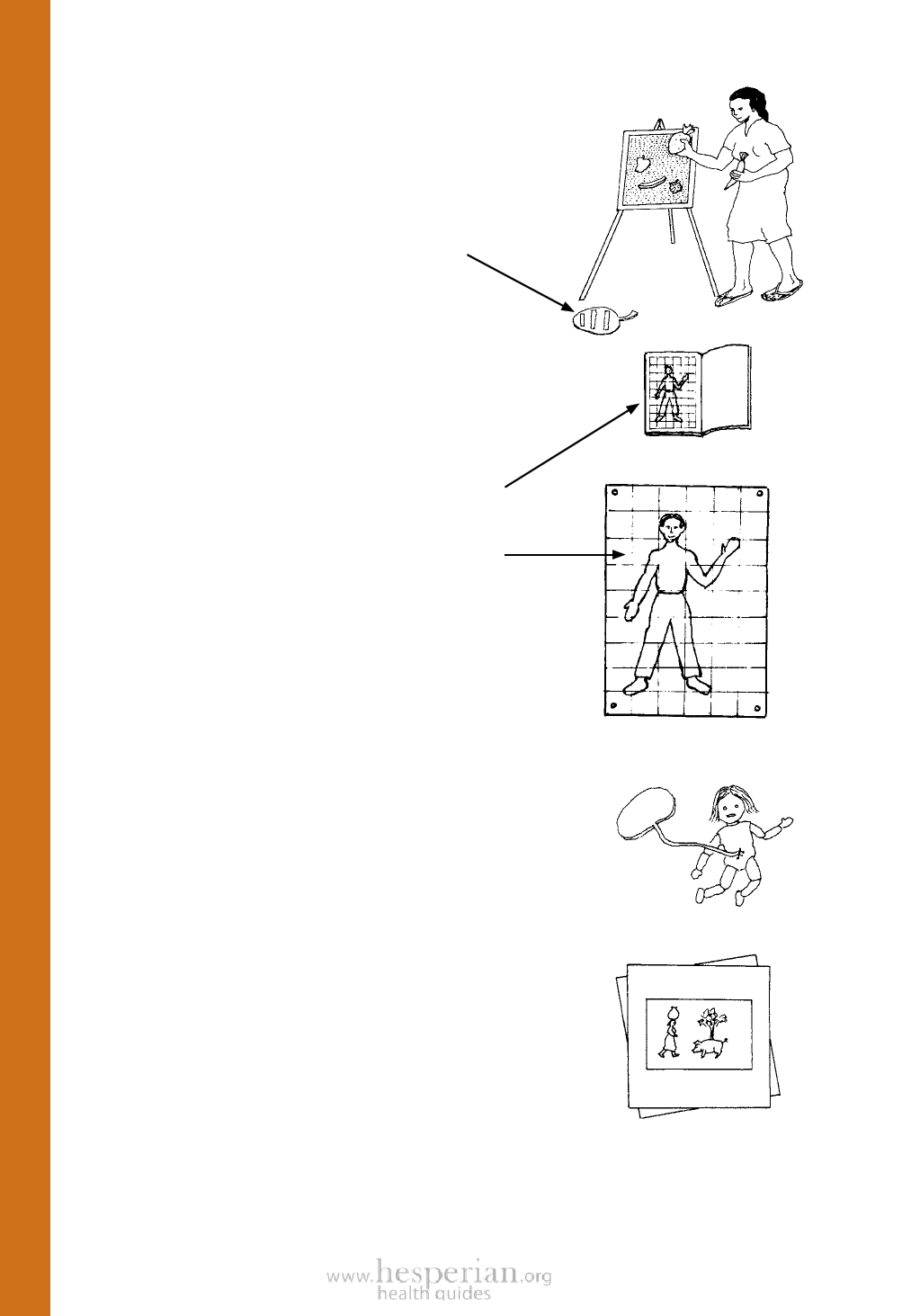
Where There Is No Doctor 2011
Tools for Teaching
Flannelboards are good for talking with groups
because you can keep making new pictures. Cover
a square board or piece of cardboard with a flannel
cloth. You can place different cutout drawings or
photos on it. Strips of sandpaper or flannel glued to the
backs of cutouts help them stick to the flannelboard.
Posters and displays. “A picture is worth a
thousand words.” Simple drawings, with or without a
few words of information, can be hung in the health
post or anywhere that people will look at them. You
can copy some of the pictures from this book.
If you have trouble getting sizes and shapes right,
draw light, even squares in pencil over the picture
you want to copy.
Now draw the same number of squares lightly,
but larger, on the poster paper or cardboard. Then
copy the drawing, square for square.
If possible, ask village artists to draw or paint
posters. Or have children make posters on different
subjects.
Models and demonstrations help get ideas across.
For example, if you want to talk with mothers and midwives
about care in cutting the cord of a newborn child, you
can make a doll for the baby. Pin a cloth cord to its belly.
Experienced midwives can demonstrate to others.
Color slides and filmstrips are available on different
health subjects for many parts of the world. Some come in
sets that tell a story. Simple viewers and battery-operated
projectors are also available.
A list of addresses where you can send for teaching
materials to use for health education in your village can be
found on pages 429 to 432.
w22